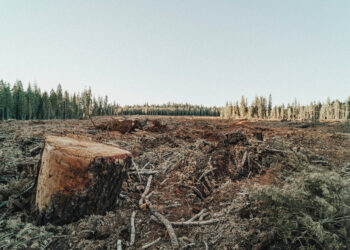Planting trees, greening cities, and restoring wetlands are some of the solutions to the global climate and biodiversity crises that have gained traction in the wake of the COP26 climate talks.
Yet these “nature-based solutions,” which strategically harness natural resources and processes to address environmental challenges, are not necessarily the silver bullet to solving interconnected crises that we might hope them to be.
The reality is that there is a lack of hard evidence about which solutions work, and in which contexts, and whether they are resilient in the face of heightening pressures and extremes brought on by climate change.
The growing popularity of nature-based solutions among policymakers and organizations is outpacing rigorous research, meaning ideas and innovations are being promoted whilst questions about their efficacy and feasibility remain. One recent study from Africa, for instance, reviewed some 10,000 publications on nature-based solutions for water issues but found only about 150 provided scientific data or evidence of their effectiveness.
Interconnected Crises
It is clear that climate change and biodiversity loss, as well as a range of other complex and interlinked challenges, including land and soil degradation and water crises, cannot be solved in isolation.
Simply throwing more “nature” at these challenges is unlikely to solve them. The reality is we need an integrated combination of both engineered, or “grey,” solutions working in tandem with “green,” nature-based solutions.
To effectively implement nature-based solutions, together with other tools, to help solve multiple challenges, the world urgently needs to accelerate investment in research.
Investment in Research
Firstly, more investment and research is needed to help identify and mitigate the unintended consequences and trade-offs that may be connected to using nature-based solutions.
More research can help us understand the wider consequences of mass tree-planting as a climate solution, for example, including the potential increase in water demand, since trees transpire large volumes of water as they grow. Authorities need to make sure that such a “nature-based solution” does not inadvertently add to environmental burdens.
Research can also reveal how nature-based solutions and more traditional engineered infrastructure, such as dams, interact, and how they might complement or undermine one another in different possible combinations.
Limitations
Secondly, more research is needed to fully understand and model the limitations of nature-based solutions on a case-by-case basis, and to develop more integrated solutions that will cope better with growing climate variability and extremes.
For instance, although China’s “sponge cities” use nature-based solutions to soak up excess water and mitigate the worst impacts of floods, extreme weather in one such city, Zhengzhou, saw the $80 million “sponge” defences overwhelmed and the city engulfed with floodwaters in July.
Understanding the limitations of nature-based solutions, just as engineers currently understand the limitations of traditional built infrastructure, will help authorities better plan and prepare for the more extreme weather events projected to increase as a consequence of climate change.
Similarly, understanding how engineered infrastructure can work with nature-based solutions – for example, environmental flows to maintain river and floodplain ecosystems downstream of dams – also requires more research. Evidence to date suggests that when used in the right combination, such systems offer a powerful prospect for managing natural resources and contributing to livelihoods, food security and climate resilience.
One Size Does Not Fit All
Finally, investment is needed to allow scientists to test these solutions in different contexts. Solutions are needed urgently. However, because there remains significant uncertainty, researchers need to ensure we adequately monitor and “adaptively” manage different solutions to ensure that they deliver what they promise and that their performance is optimized.
Good research can help reduce the risk of governments investing heavily in mal-adapted innovations, which are not only ineffective, but also a significant waste of financial and human resources.
The widespread interest in the potential of nature-based solutions clearly reflects the growing recognition that properly managing both the natural environment and natural resources is an imperative in the fight against climate change and biodiversity loss.
However, the urgency of these challenges can lead to interventions for which the implications are not fully understood and in some circumstances may hinder, rather than contribute, to solutions.
More investment in research, and understanding which investments are effective, where and when, is a prerequisite for ensuring success in tackling the numerous global – often seemingly insurmountable – challenges we face today.
Disclaimer: The views and opinions expressed here are those of the author and do not necessarily reflect the editorial position of The Globe Post.






















